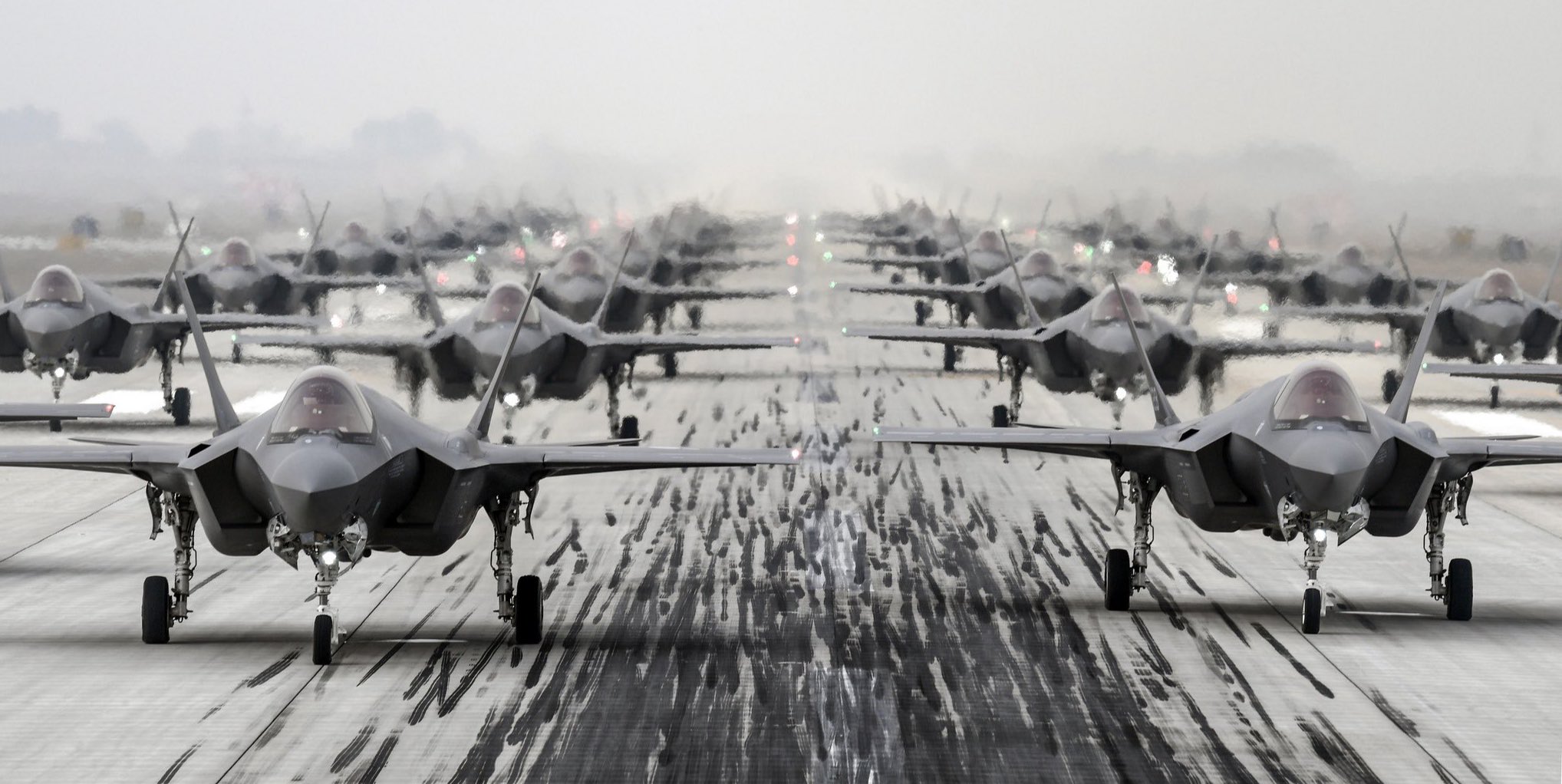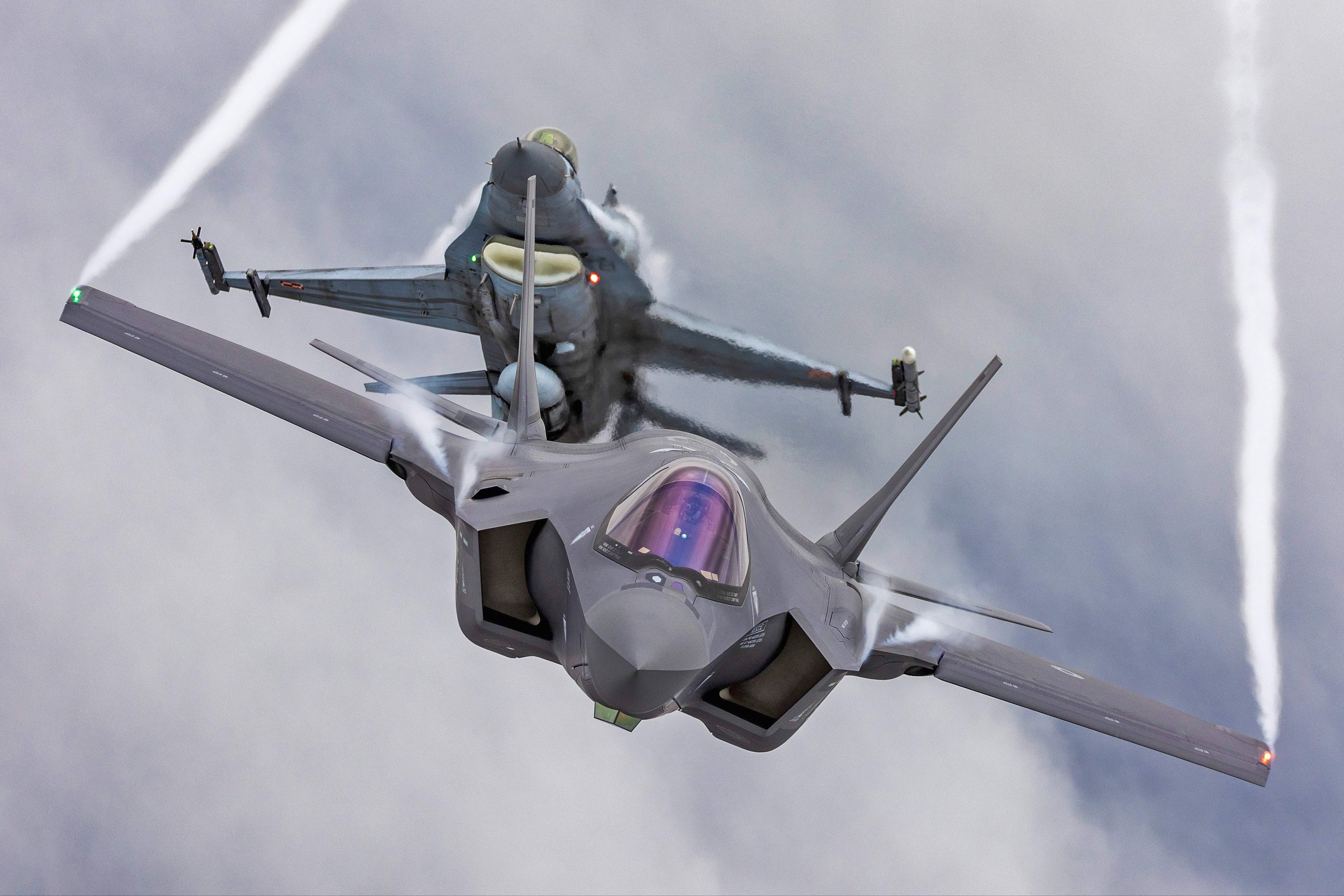In a vital development impacting its defense capabilities, the South Korean Air Force has announced its decision to retire an F-35A stealth aircraft after it suffered considerable damage in a bird collision incident last year.
In January 2022, a South Korean F-35 pilot was compelled to execute a “belly landing” following a bird hit during a training session that resulted in an avionics system malfunction.
At the time, the ROKAF revealed that a 10-kilogram eagle hit the jet in the left air intake of the aircraft.
This accident led to the penetration of a bulkhead into the weapons room, damaging hydraulic duct and power supply cables. This interfered with the operation of the landing gear. Consequently, the aircraft had to belly land, but the pilot was unhurt.
This unforeseen incident triggered deliberations on repair expenses, ultimately culminating in the decision to retire the aircraft due to financial constraints and heightened security concerns, reported South Korea’s Yonhap News Agency on December 1.

The report said a detailed analysis involving the aircraft’s manufacturer, Lockheed Martin, revealed alarming damage to nearly 300 crucial components, encompassing critical areas such as the airframe, structure, engine, and control and navigation systems.
The severity of the damage raised concerns regarding both the exorbitant costs of repair, estimated at around 140 billion won (equivalent to US$107.6 million), and the extensive time required to restore the aircraft to operational status.
The expense of repairs surpasses the original acquisition cost of the F-35A, initially estimated at 110 billion won. Considering this financial gap and the extended repair duration, the Air Force deemed retirement a more practical choice.
In May 2023, the EurAsian Times disclosed that the Korean military is expected to cover the repair costs, as the incident in January 2022 was deemed a stroke of “bad luck” and not a consequence of any mechanical error on the company’s part.
Furthermore, the Air Force’s evaluation committee considered the financial aspects and elevated security considerations regarding the aircraft’s recovery. However, the decision is still awaiting approval from the defense ministry.
Nonetheless, while the retirement plan awaits official approval, the Air Force has already considered alternative applications for the decommissioned aircraft. Among the proposed options is its potential use in enhancing and facilitating mechanics’ training within the Air Force.
South Korean F-35 Lightning II
The Republic of Korea Air Force (ROKAF) currently operates a fleet of 40 F-35A Conventional Take Off and Landing (CTOL) aircraft, positioning these warplanes as the central component of the nation’s air power.
This deployment aims to enhance operational capabilities and strengthen readiness against potential adversaries.
In a critical development earlier this year, South Korea unveiled plans to procure an additional F-35A Lightning II fighter jets. The US State Department approved this US$5.06 billion sale of 25 F-35A fighter jets for South Korea in September 2023.
Discussions regarding the acquisition of the F-35B short-takeoff-and-vertical-landing variant for a planned aircraft carrier have also previously taken place. But uncertainties currently envelop the deal.
Meanwhile, the F-35 fifth-generation fighter fleet supports South Korea’s “three-axis” defense strategy.

This strategy encompasses air and missile defense systems, retaliatory measures against Pyongyang, and preemptive actions against potential North Korean threats.
With their stealth capabilities, F-35 fighters provide Seoul with a strategic advantage by potentially breaching North Korea’s air defenses, making Pyongyang vulnerable to airstrikes targeting vital military installations.
This capability is particularly crucial considering North Korea’s threats to deploy tactical nuclear weapons in the event of a conflict.
However, the F-35A fighter jets of the South Korean Air Force encountered significant operational hurdles, experiencing operational unavailability on 234 occasions over an 18-month duration, concluding in June 2022, due to various malfunctions.
Among these instances, 172 occasions saw the fighters grounded, while on 62 occasions, they were capable of flying but unable to complete specific tasks. The grounded fifth-generation fighters managed to execute missions for only an average of 12 days in 2021 and 11 days in the first half of 2022.
Meanwhile, South Korea is also progressing with developing its indigenous stealth fighter aircraft, the KF-21. Upon completing the development, South Korea will join a select group of nations operating homegrown supersonic fighter jets.
- Contact the author at ashishmichel(at)gmail.com
- Follow EurAsian Times on Google News




